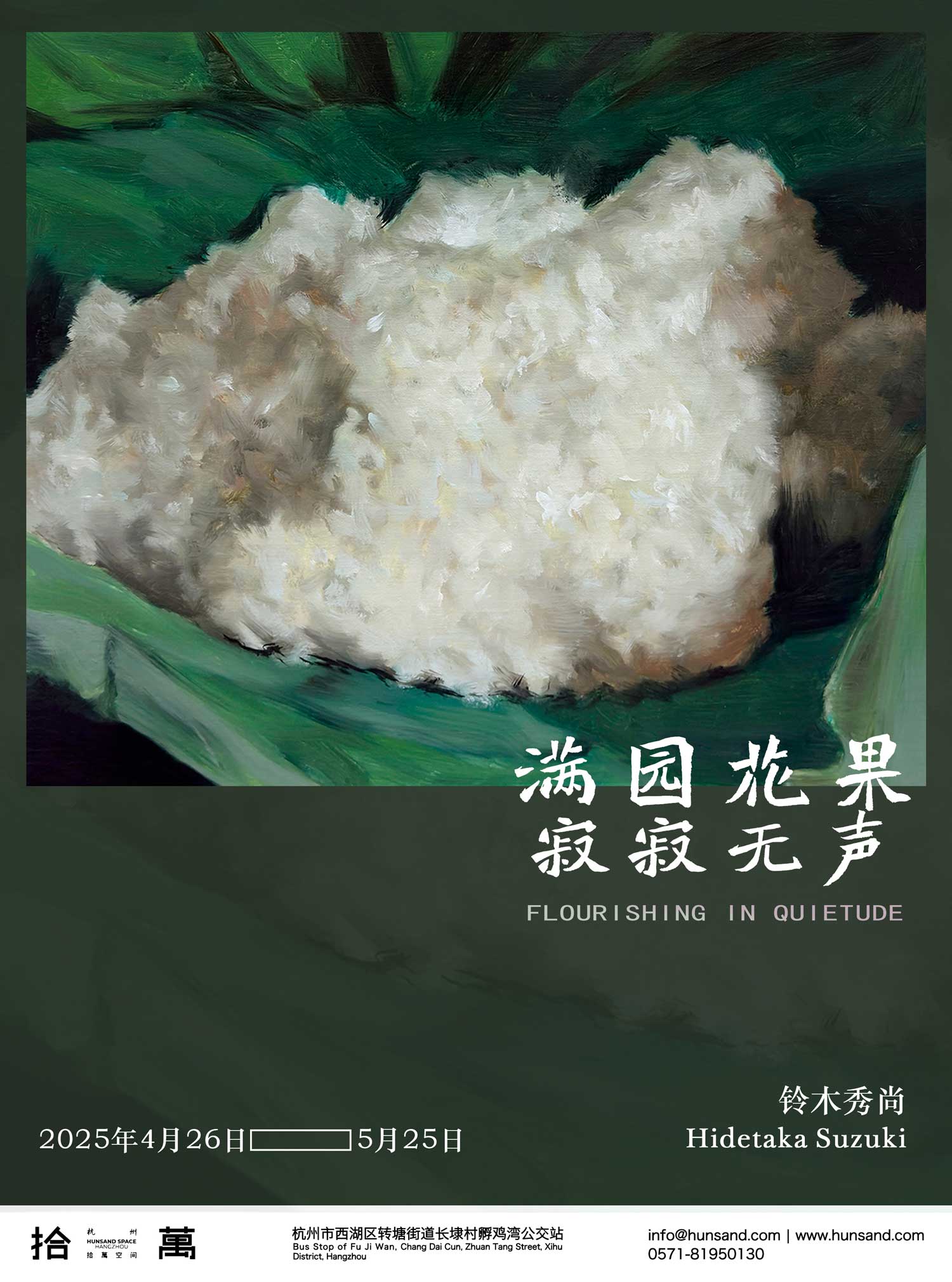Hunsand Space (Hangzhou) will present Japanese artist Hidetaka Suzuki’s solo exhibition, “FLOURISHING IN QUIETUDE”, opening on April 26. In the garden, flowers and fruits grow in abundance, their flourishing freedom muting all external noise, creating a profound sense of stillness. Suzuki’s works embody a similar quietude—beneath their tranquil surface lies a rich and intense undercurrent: a persistent inquiry into the nature of painting and a deep questioning of photographic imagery. As one of the most active Japanese artists on the international stage in recent years, this marks Suzuki’s first solo exhibition in Chinesemainland. Through an approach akin to plein-air painting, the exhibition explores painting’s multiple references that oscillate between reality and fiction.
A key turning point in Suzuki’s practice came while photographing a sunset. In that moment, he was struck by photography’s inability to fully capture a certain presence—something always remained beyond the lens. Strangely enough, it was Claude Monet’s paintings from his childhood memories that seemed to both compensate for and amplify this non-realist, sensory experience. The stark contrast between the two mediums led Suzuki to question the nature of what we see: Is it real? What is the relationship between photography and painting? This embodied contemplation of the virtual and the real led him to the vast archive of online imagery. Faced with internet photos that often carry a subtle unease, Suzuki found something compelling. As slices of reality, photographs reveal only a fragment of the subject, never its full richness or dimensionality. Yet it is precisely these unusual, fragmented moments that spark imagination, opening portals to cross-dimensional thought. Viewed from unconventional angles, familiar objects begin to generate tension and ambiguity—sensations that Suzuki amplifies through painting. Though the static subjects remain unchanged, his abbreviated brushwork, softened edges, stark contrasts, and deep tones build a dimension beyond the object itself—a kind of dynamic compensation for what cannot be seen.
In an age where technology increasingly dissolves belief in absolute centers and singular truths, perception and positionality shape a multiplicity of interpretations. Even if what we see is not "real," in his still lifes and distant figures, Suzuki's sensitivity captures something essential. Through the act of painting, his pursuit of meaning unfolds into a deeply synesthetic and captivating visual experience.

